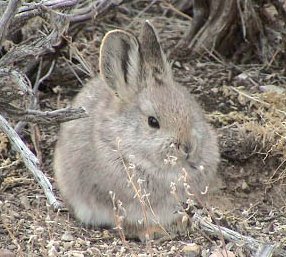News in a nutshell
| 25 April, 2011 | Adie Chan |
|

|
This week’s news includes an embattled Harvard psychologist banned from the classroom, reports from Federal agencies about their scientific integrity policies, a detailed look at gene transcription, 10 new malaria resistance genes, and the reintroduction of pygmy rabbits to the wild.
Harvard bans Hauser
Harvard University barred well-known psychologist and cognitive researcher Marc Hauser from teaching next year, according to The Boston Globe. Hauser was already on a yearlong leave from his lab after questionable data led to the retraction of a 2002 Cognition paper on cotton-top tamarins’ ability to see patterns. That sparked an internal investigation at Harvard, which found Hauser guilty of eight counts of scientific misconduct. Now, after a faculty member vote, the dean decided that Hauser will not be allowed to return to teaching in the fall, though he has not been officially terminated. Federal agencies are also investigating charges of misconduct, though no results have yet been made public. (Hat tip to ScienceInsider.)
Scientific integrity efforts unclear
President Barack Obama urged every US government executive branch department, agency, and office to adopt scientific integrity policies more than two years ago, and last week all the agencies submitted progress reports on the status of their policies. The only department to issue a final policy is the Department of Interior, and other agencies are in various states of drafting their new rules. Only six agencies out of 30 have turned in draft or final policies.
Policy analyst Gavin Baker of OMB Watch told The New York Times that the nonprofit organization is “hopeful” that progress is being made, but “disappointed” in the number of policies actually drafted. “I’m certain it hasn’t been easy,” said Francesca Grifo, director of the scientific integrity program at the Union of Concerned Scientists, but “I’m ready to be done. You know, I want the finals, and I want them now.”
Watching genes
Using light-microscopy, researchers at Albert Einstein College of Medicine of Yeshiva University devised a way to watch the transcription of individual genes in real time. Applying the method to yeast RNA polymerase, the researchers were able to distinguish the major steps of transcription – initiation, elongation, and termination – and observe that transcription rates are dependent on how long it takes transcription factors to find upstream binding sites. The researchers reported their findings last Thursday in Science.
“Understanding how gene expression is regulated in a single-celled organism such as yeast is a first step in understanding the same processes in humans,” study author Daniel Larson, head of the National Cancer Institute’s Systems Biology of Gene Expression Section, said in a press release. “Fundamentally, the same molecular laws governing transcription factors will still apply.”
Malaria resistance genes discovered
Scouring the genome of the malaria parasite Plasmodium falciparum, researchers at Harvard University and the Broad Institute in Boston have identified 10 previously undiscovered genes, and one known gene, that help confer resistance against traditional malaria treatments, Reuters reports. Transferring one of these genes from a resistant P. falciparum strain to a non-resistant bug enabled it to better withstand three standard drug treatments. The researchers, who published their results last Thursday in PLoS Genetics, are hopeful that the identification of such genes will help prolong the lifespan of existing malaria treatments and aid the development of new drugs.
Happy Easter for pygmy rabbits
Endangered pygmy rabbits are being reintroduced to the Columbia Basin, from which they went extinct in 2004. In 2001, conservation biologists at the Washington Department of Fish and Wildlife bred 16 wild rabbits with individuals from Idaho to help populations in Washington State rebound from the decreased genetic diversity and increased susceptibility to parasites caused by inbreeding as a result of their dwindling numbers. The biologists first attempted to reintroduce the rabbits to the Columbia Basin in 2007, but hungry raptors and coyotes thwarted the effort. Now, they are attempted a “soft release” strategy, Wired reports, in which captive-bred rabbits are kept in a six-acre enclosure to adjust to the more natural conditions and protect them from predators, before being released into the wild.
Related News Stories:
[24nth February 2011]
[16th December 2010]
[June 2007]

|

